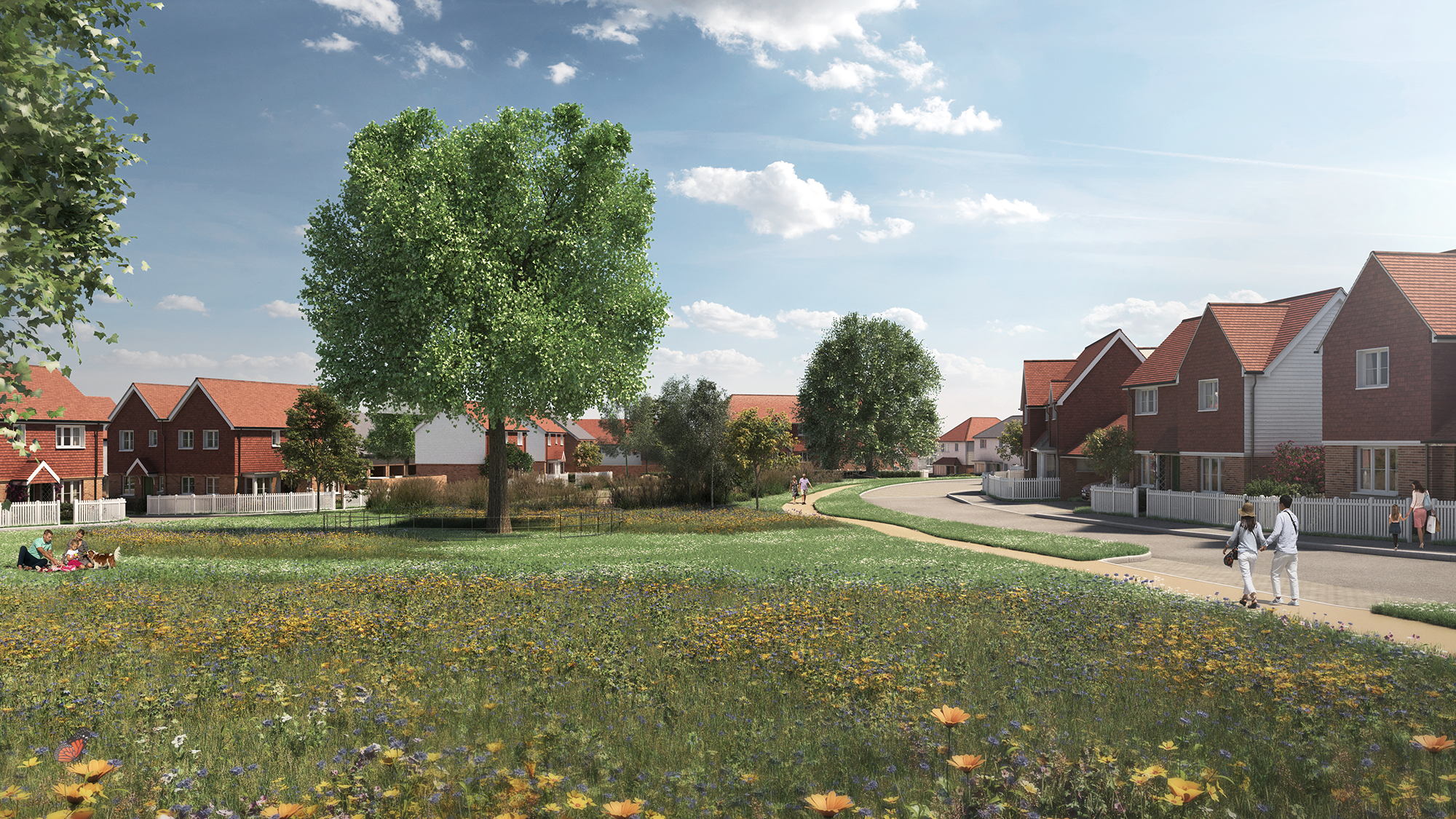
A key aim of previous government proposals to reform the planning system has been to create greater certainty for applicants, and for the communities where development is proposed. Yet in two instances towards the end of the last parliament the secretary of state called in planning decisions that were subsequently deemed to have been misapplied. So what is the rationale for calling in planning applications?
The most prominent case has been Marks and Spencer's (M&S) proposed redevelopment at Marble Arch, London, an application to Westminster City Council already called in by the mayor of London. This has given rise to considerable debate on the decision-making process and the evolution of policy on embodied carbon in existing buildings.
Inquiry supports Marks & Spencer redevelopment
In June 2022, secretary of state Michael Gove ordered a public inquiry into the plan to demolish the existing M&S store at Marble Arch, London, and rebuild it as a mixed-use development.
The inspector who carried out the public inquiry noted:
- the effects on designated heritage assets – particularly Selfridges, a grade II* listed building – as well as non-designated ones, and the extent to which these effects would be consistent with government policy for conserving and enhancing the historic environment, particularly the context of Selfridges
- the effects on the UK's transition to a zero-carbon economy, with particular regard to the scheme's sustainability and its whole-life carbon (WLC) assessment
- Once the decision is made, the decision officer – a Department for Levelling Up, Housing and Communities official – signs the decision letter. This contains considerable detail about the technical evaluation confirming the decision made by the secretary of state.
Regarding factors that influenced the secretary of state's decision, the inspector said: 'On heritage issues, the scheme would … accord with the relevant development plan policies [and even] had it not, the NPPF heritage policies would amount to a sufficient material consideration as to outweigh any conflict with the development plan.'
In relation to zero carbon he noted that none of the existing policies prohibits demolition and redevelopment in appropriate circumstances. He did conclude that 'on the face of it the proposals would generally impede the UK's transition to a zero-carbon economy … and that in theory this would weigh heavily against the scheme' – in particular, the extent of embodied energy required.
However, he concluded none of the material considerations altered his findings that the proposals should be determined in accordance with the development plan as a whole, and permission should be granted.
Secretary of state rejects bid despite advice
In July 2023, however, Gove refused the application on the grounds of conflict with the development plan, the impact on heritage assets and the embodied carbon impact. He disagreed with the inspector's recommendation, and gave a rationale applying the principles of the planning balance in a different way.
He considered there was overall conflict with development plan policies on design, and partial conflict with heritage policies. He then went on to consider whether there were material considerations that indicated the proposal should be determined other than in line with the development plan.
Gove recognised a number of favourable aspects of the proposal but relied instead on paragraph 157 of the NPPF, which states: 'The planning system should support the transition to a low-carbon future' and 'help to: shape places in ways that contribute to radical reductions in greenhouse gas emissions, … [and] encourage the reuse of existing resources, including the conversion of existing buildings'.
With reference to this he considered that, by demolishing an existing building, the proposal would in part fail to support the transition to a low-carbon future.
Judge finds Gove misinterpreted NPPF
In taking the decision to the High Court, M&S offered six grounds of appeal, one of which related to the legality of the decision.
In Marks and Spencer PLC v Secretary of State for Levelling Up, Housing and Communities & Ors [2024] EWHC 452 (Admin ), the court held that the secretary of state erred in law in reaching his conclusion because it was based on a meaning of the NPPF that was not open to him to interpret in this way and was therefore unlawful. The secretary of state's decision letter relied on assuming a presumption in favour of retaining the building when no such presumption existed in the framework or in local planning policies.
Judge Mrs Justice Lieven stated: 'The word "presumption" has a specific meaning and effect in planning decisions. The consequence of this is that misuse of a presumption, where one does not actually exist in policy or law, is a highly material error.'
In her view, 'it was plain that the [secretary of state] misinterpreted the NPPF, and therefore erred in law. This is a clear case of interpretation not application of policy, and therefore the court is entitled to intervene.' She went on to say 'that the secretary of state had not so much applied the policy as rewritten it'.
The judgment recognises that the planning proposal presented both in M&S's original application and the subsequent inquiry was within planning law and policy.
The new government has a chance to reconsider the case and review the inspector's recommendation on the correct law and policy grounds, and the decision could result in revisions to the NPPF.
The High Court ruling could also give developers greater confidence in bringing forward contemporary new-build schemes; but in such a volatile policy environment the risk has not gone away.
How called-in and recovered applications should work
The local plan-making process requires plan policies to be publicly examined and tested against national policies in the National Planning Policy Framework (NPPF) before being adopted.
However, both the secretary of state for levelling up, housing and communities and the mayor of London have the power to call in and determine individual cases before the local planning authority (LPA) decides them.
- The secretary of state will normally only do so if the application conflicts with national policy in important ways or is nationally significant. They have to take published government policy into account when deciding whether or not to call it in, and when making the decision. An inspector is then appointed to carry out an inquiry and the secretary of state has to take their findings into account when making a decision, though is not bound by them.
- Planning appeals can also be recovered for decision by ministers. This means that rather having an inspector making the decision, they will write a report recommending how the appeal should be determined. The report is passed to the secretary of state to take into account when making the decision.
- Once the decision is made, the decision officer – a Department for Levelling Up, Housing and Communities official – signs the decision letter. This contains considerable detail about the technical evaluation confirming the decision made by the secretary of state.
Inspector recommends approval of High Weald homes
In April 2023, Gove had also rejected Berkeley Homes' application for planning permission for 165 homes in the Kent Weald, substantially on design grounds.
The proposed scheme, which is in the High Weald Area of Outstanding Natural Beauty (AONB), had been submitted by Berkeley in March 2020, and at the same time Tunbridge Wells Borough Council had published a draft housing allocation concerning the site in its emerging local plan.
After extensive dialogue and development of the application with officers, the borough resolved to grant planning permission in January 2021 – yet in April that year the secretary of state called it in. Gove turned it down, among other reasons, because he considered it 'generic' and not 'sensitively designed' having regard to its setting.

CGI rendering of proposed development site at High Weald, Kent. © Berkeley Group

Hand-drawn visuals of proposed development site at High Weald, Kent. © Berkeley Group
The call-in letter enumerated the particular points on which the secretary of state wished to be informed, relating to the proposed development's consistency with the NPPF:
- conserving and enhancing the natural environment, including its effect on the High Weald AONB biodiversity and air quality
- building sufficient homes, including whether the local authority could demonstrate a supply of suitable housing sites in compliance with the NPPF
- conserving and enhancing the historic environment, including the effect of heritage assets
- sustainable transport promotion.
An expensive 18-day public inquiry followed in autumn 2021, covering each of the general matters the secretary of state wanted to consider. An experienced planning inspector appointed by the secretary of state then issued his report in the following April.
This recommended that the application should be granted subject to conditions and planning obligations. On each of the issues considered at the inquiry, it endorsed the position advanced either by the applicant or by the borough council, which had continued to support the application.
The inspector concluded that it was rare for a scheme to provide such a package of exceptional benefits on a site adjacent to a second-tier settlement. It would provide much-needed housing, including affordable housing, above the rate required by the development plan, in a highly constrained area.
It also offered landscape enhancements, with limited associated harm, as well as biodiversity enhancements, while developing only a small proportion of the overall site. In doing so it would provide a strong long-term settlement edge.
He did state, however: 'I am mindful that the secretary of state may come to a different conclusion on various aspects of the evidence, which have the potential to require a different approach to framework para[graph] 11.'
Some 12 months after the inspector's report was received and more than two years after the original call-in, then housing minister Rachel MacLean issued a decision in April 2023 on the secretary of state's behalf that rejected the scheme.
Minister cites design issue in refusing scheme
Maclean's decision letter said: 'While [the secretary of state] agrees with the inspector that the proposed development would deliver landscape enhancements[,] he does not find the proposal to be of a high standard [that] has evolved through thoughtful regard to its context.
'Overall, he does not find that the scheme is sensitively designed having regard to its setting. He finds that the design of the proposal does not reflect the expectations of the High Weald Housing Design Guide, being of a generic suburban nature [that] does not reproduce the constituent elements of local settlements. He also considers that the layout of the scheme does not respond to its AONB setting.'
Gove concluded that exceptional circumstances did not exist to justify the proposed development in the AONB and that it would not be in the public interest.
His letter also stated that paragraph 177 of the 2021 framework provides a clear reason for refusing the proposal and, as such, the presumption in favour of sustainable development no longer applied. He concluded that the planning permission be refused.
Applicant takes government to court
Developer Berkeley Homes proceeded with a High Court challenge on six grounds, including design. It stated: 'the proposal for 165 high-quality, individually designed new homes (including 66 affordable homes) was developed in close consultation with local partners and had strong support at local level.'
Before the High Court considered the challenge, though, the secretary of state in May 2023, conceding that the decision was unlawful. Gove noted that he had had regard to the housing land supply position when the inspector considered the application in November 2021, and his assessment that exceptional circumstances did not exist to grant planning permission was premised in part on this.
However, by the time of the decision in 2023, the housing land supply had worsened, with the five-year land supply deficit much greater than it had been at the time of the inquiry or the inspector's report hence there were clearer grounds for more housing.
Berkeley accepted the secretary of state's concession so as not to protract the matter further, and following due process in the High Court the decision was formally quashed in October 2023.
The decision has now returned to the secretary of state to reconsider, with additional and up-to-date evidence requested by all parties involved. The site is now to be considered in the context of a revised NPPF, and a neighbourhood plan that was adjusted before being finalised to ensure it did not conflict with the intended site allocation.
Although it lies in the AONB, the site is between a completed Berkeley development of 40 homes that won the Evening Standard 2023 new homes award for Best Small Development and a partially constructed development of 180 homes by Hill Residential. Tunbridge Wells Borough Council's local plan is now in the final stages of re-examination, and the Berkeley site remains allocated for development.
Political intervention increases risk
Even if the number of applications called in by the secretary of state is relatively small, there is still the possibility for local decision-makers to be overridden on grounds that are often not entirely clear. But the opinions and judgement of such decision-makers may already have contributed significantly to the final shape of a proposal.
In these two cases, it seems the applicants had reached a satisfactory outcome with their relevant planning authorities. It is particularly unsettling to have the secretary of state then intervene in matters of aesthetic design, which are often highly subjective.
The perception of risk is compounded where the secretary of state overrides the recommendation of a planning inspector who has held a public inquiry. This is worse still when the over-zealous secretary of state was in error and his decision was subsequently quashed.
At an RICS planning and development conference some years ago, one presenter showed a slide with a list of ten lenders willing to fund a certain scheme. They quickly advised that if there were planning risk associated with the site they would have to exclude the first five of these.
Given today's higher interest rates, and with construction costs rising, planning will need to function more effectively to provide greater certainty in decision-making. The refusals by the former secretary of state against the advice of his inspectors arguably make taking a development proposal through the planning system a much riskier proposition.
Call-ins call process itself into question
This leads us to question what the function of the call-in process is. Perhaps it is time to evaluate its purpose, and the potential for misuse.
Town Legal partner Simon Ricketts – a specialist planning lawyer – commented on the function of call-ins: 'I see no logical (as opposed to political) reason why the call-in power should not either be abolished in its entirety or … restricted by way of clearly defined criteria and thresholds.'
Amid the various trade-offs and balancing exercises carried out through the discretionary planning system, two specific professional surveying implications arise from these cases.
The first concerns valuations. At the root of any planning application is a property, typically with debt secured on it. How is such uncertainty about planning outcomes to be reflected in a single valuation figure for lending purposes?
Over what time frame are valuers assessing the reasonable expectations of receiving an implementable permission, to arrive at a market value for a potential development site? How are they to avoid hedging their report with so many caveats that the certification becomes meaningless? How far does a lender rely on this in arriving at a decision to put large amounts of capital at risk?
The second implication relates to the professional guidance that RICS produces for members in response to government policy. We are acutely aware of the risks of going beyond advice on the application of settled government policy to an interpretation of that policy and, by extension, to the creation of new one. It is instructive to note that the secretary of state is also not at liberty to create new policies for their own convenience without going through the normal processes.
The government is now determined to enable housing-led development to take place speedily. It is also keen to devolve power to local administrations. It seems obvious to state that to function effectively, a plan-led system requires up-to-date plans that are in conformity with the NPPF and, in the case of London boroughs, also in conformity with the London Plan. This should remove the need for the secretary of state or mayor to intervene on policy grounds.
It then requires a binding obligation to be placed on planning committees to decide applications in accordance with their up-to-date plan within a prescribed time frame. This should provide the certainty that a local plan should give to communities and. In this way the planning system becomes a truly enabling service rather than an increasingly elongated performative process.
There has been a tendency to add another layer of administrative scrutiny rather than solving the fundamental problem that is the maintenance of up-to-date plans and taking timely decisions in accordance with them. Lest we forget when an applicant feels aggrieved the system already provides for an appeal to the planning inspectorate to have applications determined on a rational basis.
A functioning planning system may seem idealistic and a long way off. While we are waiting for the ideal to emerge, we could make use of this call-in power to accelerate provision. Many of our members have sites stalled in a sclerotic planning process, prolonging the risk of development never taking place.
Shouldn't the secretary of state ask local planning authorities to identify sites above a certain size, stalled for more than six months to be called in and decided in accordance with sustainable development principles by a special planning inspectorate task force?

